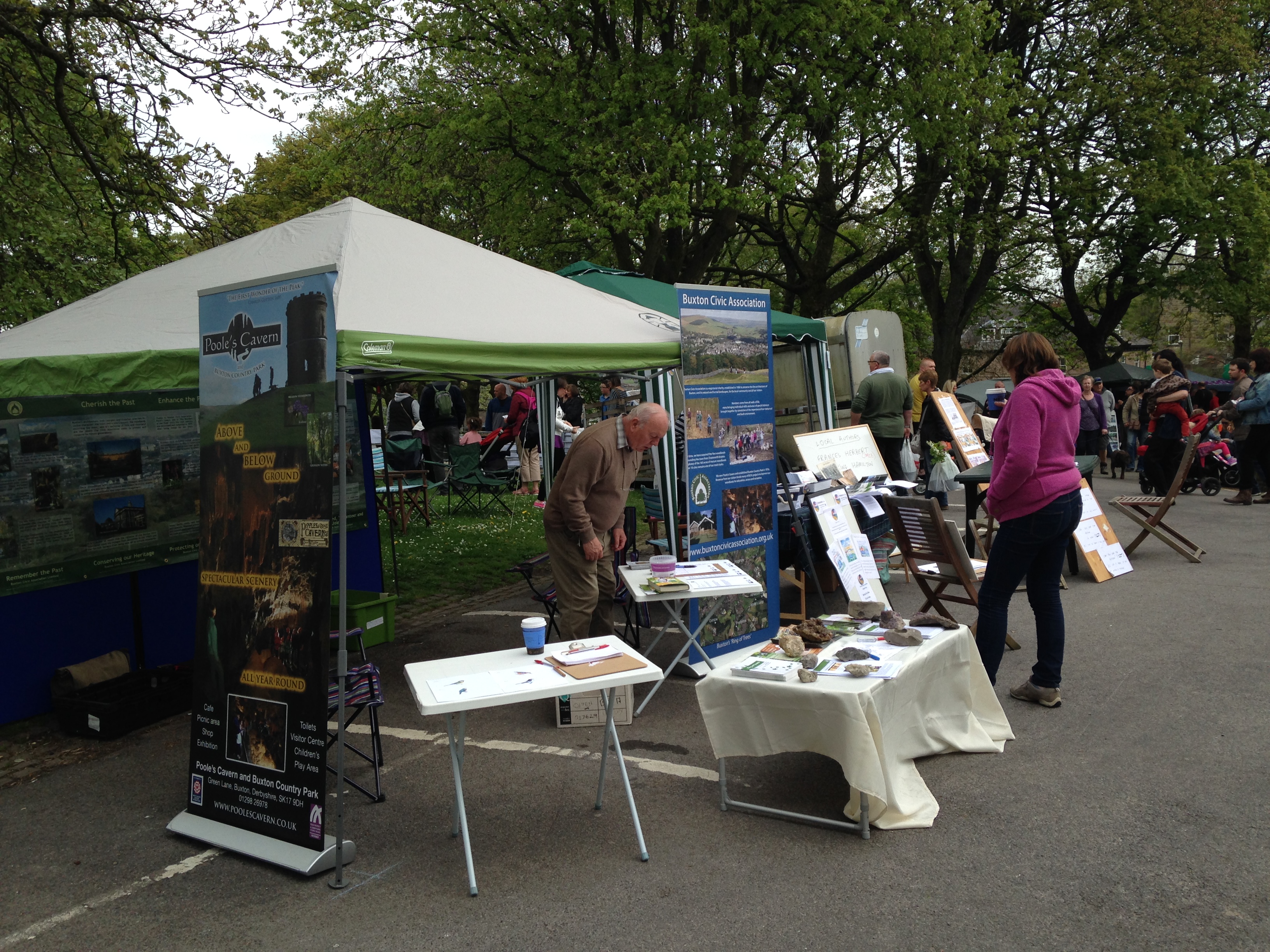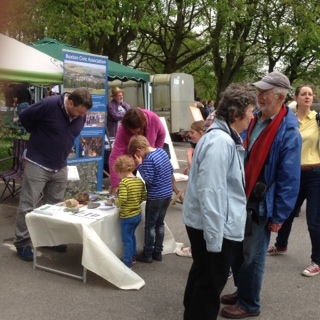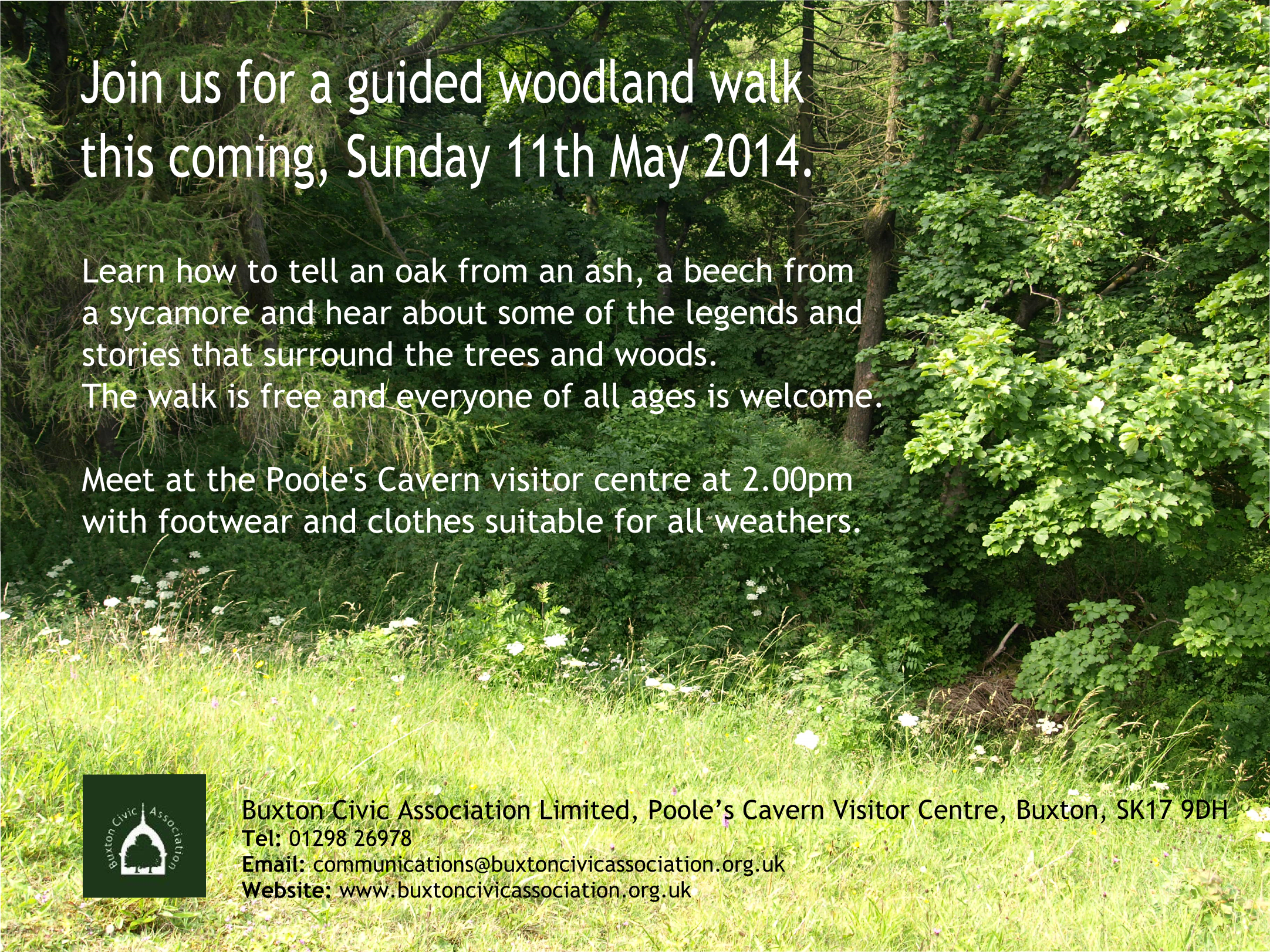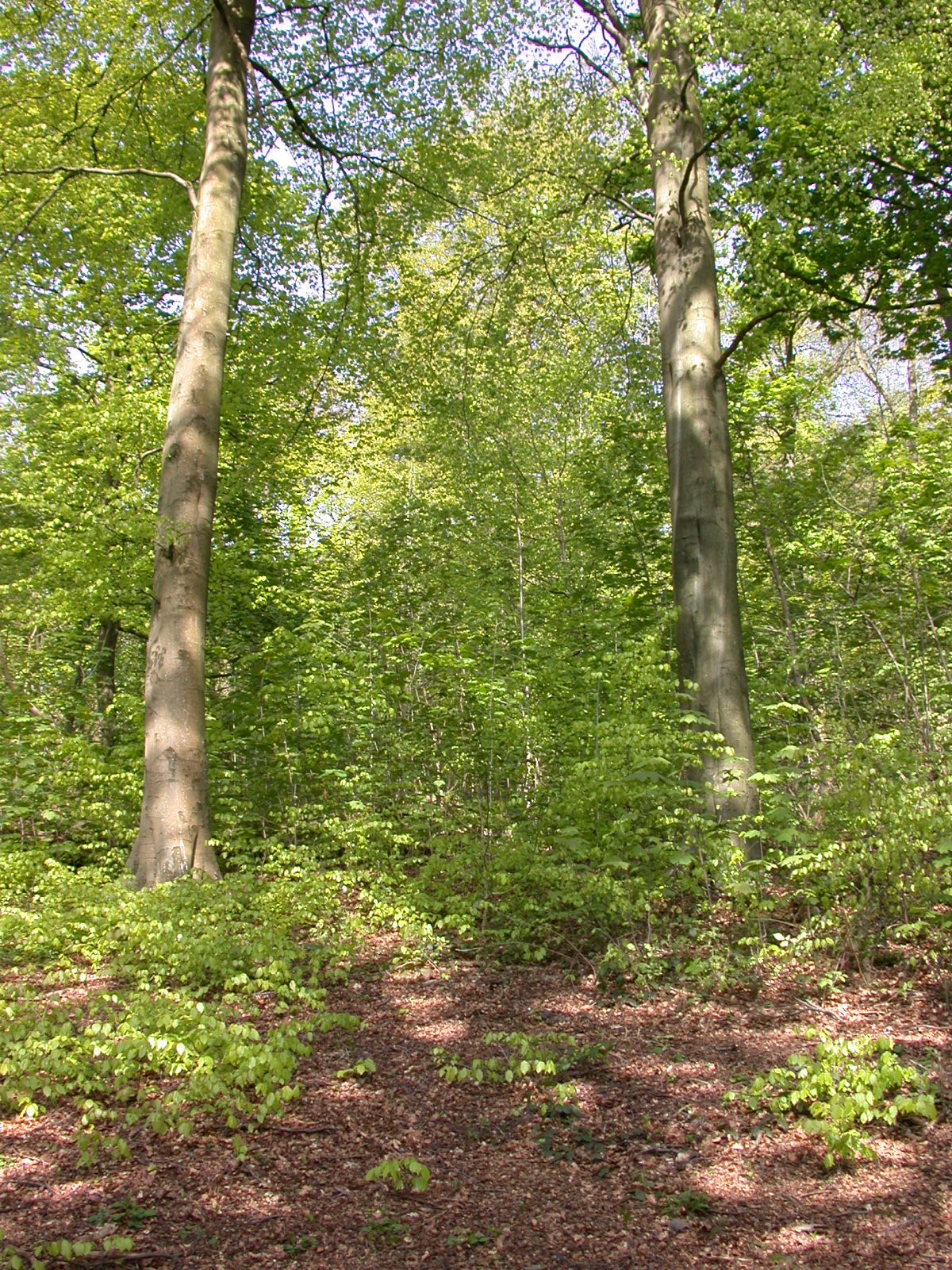Below is the list of 21 different species of tree that you can see in Grin Wood.

How many of these have you seen in Grin Wood?

How many of these have you seen in Grin Wood?
The Buxton Civic Association will hold its AGM on 23rd June at 7.30 pm at the Poole’s Cavern Visitor Centre.
In addition to the formal business, Dai Larner, Executive Director of High Peak Borough Council and Staffordshire Moorlands District Council will speak to members of the Civic Association on "The process of producing the local plan."
Full details of the AGM will be sent to members in due course.
The rain held off just long enough to enable thirty members Buxton Civic Association to undertake a guided talk and walk in Grin woods to learn how to recognise the different trees that grow there.
Under the very able guidance of Angela Wills and Mike Monaghan, the afternoon started off with a talk about the history of the woods explaining that they were planted in the late eighteenth century to hide the scars from the limestone extraction and lime burning that had gone on on Grinlow for many years.
Initially planted with Beech, there were now some 21 species of trees that could be found in the woods, and Mike and Angela provided examples of the leaves, bark and fruit of many of them to help with their identification.
During a break in the weather Angela and Mike then led a guided walk through the woods and members were able to see how many of the trees they could identify.
It was a thoroughly enjoyable and informative afternoon and everyone is looking forward to the next guided walk on 20th July which will be about the wild flowers of the glades in Grin woods.

Setting up the BCA stand at the 2014 Buxton Spring Fair
Sunshine and plenty of people made for a busy and successful Spring Fair. The BCA stand was situated as last year at the top of the Slopes, and like last year saw a steady stream of people coming along to find out more about what we do, enter the guess the bird competition and to look at the rocks and fossils that we had brought along.

The rocks and fossils proved a big success especially with the youngsters.
The draw for the guess the bird competition will be made on Friday 9th May and the first correct entry drawn will win a years family membership to the Civic Association. The winner will be notified by e-mail.


Its time for the Buxton Spring Fair again. We will be having a stand and like last year we are at the top of the Slopes. Come along and say hello. The weather forecast is good so like last year it should be an amazing day.
On April 17th the Civic Voice, of which the BCA is proud to be a member, celebrated their fourth anniversary in style! As well as launching the first ever publication telling the history of the civic society movement they also introduced the Sandys Lecture and launched a video to help let the world know what a modern civic group looks like. The video below gives a snapshot of the day, if you are interested in viewing the video highlighting the work of the civic movement go to the civic voice website and view it under the link to resources or click on the link below.
http://www.civicvoice.org.uk/resources/the-civic-movement-promoting-civic-pride-and-celebrating-the-places-where-we-live-2014/

is it an Oak? Or a Beech tree? Come along on the guided walk to Grin low on Sunday 11th May 2014 and learn how to identify the different trees in our woods.
Now that spring is well and truly here, why not come along and learn about the different trees that grow in Grin low woods. Buxton Civic Association are organising a guided walk through the woods on Sunday 11th May starting at 2.00 pm. The walk will start at the visitors centre at Poole’s Cavern and will include an introductory talk about the history of the woods and the different species of trees that can be found there, followed by a walk in the woods to get some practical experience in identifying the trees. The talk and walk is free to members and non members and families are especially welcome. Printed guides to the trees in the woods will be provided and we ask that participants make a small contribution for these on the day. Bring your water proofs just in case and some stout footwear.

A badger vaccination programme can help protect the wildlife population from Bovine TB
Buxton Civic Association are pleased to announce that we are working closely with Derbyshire, Wildlife Trust, Derbyshire Country Council, Badger Trust, and a number of local land owners to support the work that Derbyshire Wildlife Trust are doing to help protect wildlife from the risks of being infected by Bovine TB, by carrying out a badger vaccination programme in the High Peak and Derbyshire.
The plan is to carry out the badger vaccination programme over a period of five years, which will help to support the build up of immunity in the Derbyshire badger population and contribute to reducing the risk to the badgers and other wildlife of contracting bovine TB.
Keep an eye and an ear out for further updates on our website www.buxtoncivicassociation.org.uk, on local radio, and for more information on the work the Derbyshire Wildlife Trust are doing on Badger Vaccination go to their website at www.derbyshirewildlifetrust.org.uk.

Volunteers gathering to help with the Spring Clean organised by the Town Team
Many thanks to the Buxton Civic Association members for turning out on Saturday morning to support the Big Spring Clean organised so well by the Buxton Town Team. The Spring clean made a big impression on the town and for the town, with visitors and residents stopping to say how impressed they were at the community spirit so evident in Buxton.